Presenting Caroline Burton, Jersey City artist
October 16, 2017
On October 3, the Harold B. Lemmerman Gallery in Hepburn Hall held an artist reception for Caroline Burton’s A Rag, A Bone, A Hank of Hair. The gallery was filled with curious students, professors and visitors, as well as familiar admirers of her work. The gallery was lit with amber lighting, which combined with the light of the setting sun cast the works in a golden, glow—an almost magical atmosphere.
For the better part of two hours, the visitors were free to wander amongst the diverse works and many of the pieces such as Burton’s centerpiece, (re)vision 2, which stood in the middle of the expansive space, encompassed most of the viewers’ gazes. This piece encouraged people to explore further and discover the other pieces, hanging within on the other side. Unique and eccentric, the eye wanders from the intentionally loose threads to the multilayered colors seeping through the thick canvas. Then there was a piece entitled White Pelt which was soft rabbits fur, juxtaposed and contrasted with the bronze cast of the same rabbit pelt sitting on a nearby pedestal. Whether it was the pieces that were carefully sewn together or the creativity of the bronze casting, each piece inspired a sense of awe. The dedication and insight taken to visualize each piece was an impressive feat.
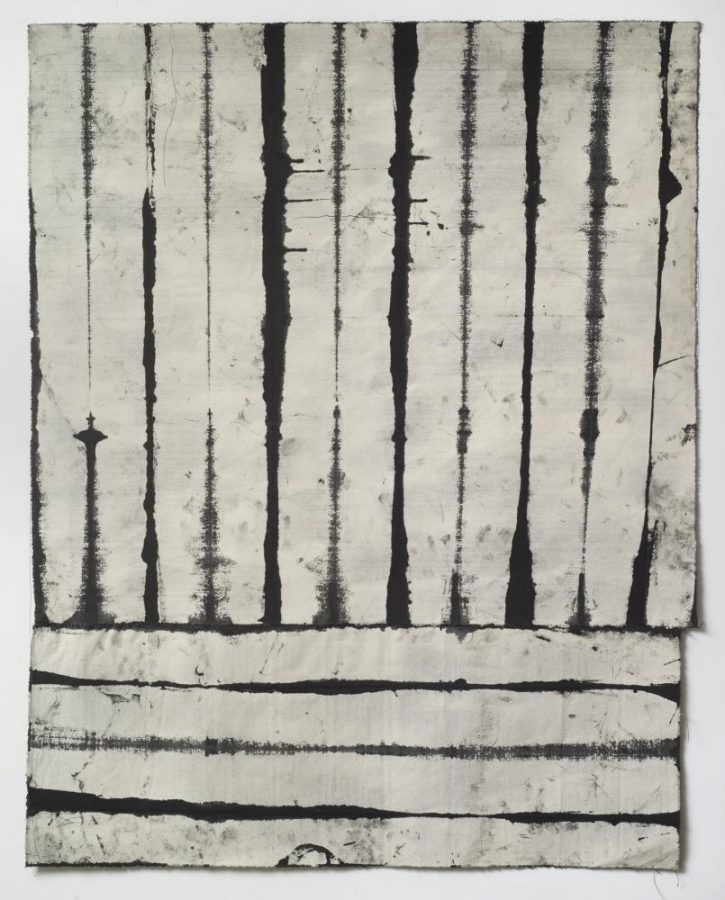
After the audience explored the gallery on their own, Burton, a spritely, lively woman, gave a talk. She spoke about her influences, her work, her methods, and chose to share her vision as a sculptor, a painter, and a draftsman.
“In my studio, whenever I am beginning something new … when I’m ready to start a new body of work or I feel that kind of urge coming… I try to think of my studio as a sanctuary for play. In the studio during a certain time, and it often happens in the residency, and I walk into a clean studio with a bunch of art supplies I think it’s a great chance to play around. Play, I think, is really important, certainly in my practice and I know for many artists it’s important. Without play it’s difficult to move forward, to go anywhere, to try new things and be unafraid to do so. That’s what I try to do when I’m at that juncture.”
Burton combines sculpture and paint with drawings and sewing. At the beginning of her work she wondered if she could take all these factors and make them culminate into one object.
“What I did was… I just started ripping up canvas and bunching it together, I made baths of pigmented paint, I started dipping it in and seeing what would happen… I had a big clothes-lines set up in my studio and from there I ventured towards trying to find ways to create a gridded pattern… So that led to find ways to fold the canvas – and some of them are made by folding the canvas in different shapes and brushing the paint on and then unfolding them to see what happens… There is also an element of surprise because it’s not very controlled, although some of it might appear controlled with its gridded quality, it’s not really a controlled process. Also, when I walk into the studio I don’t have preconceived ideas about what the end result is going to be. Three years ago, when I started painting this work I would have never imagined that it would look like what is in this room right now. That part for me is what making art does and it’s the work giving back to me and hopefully, in turn, giving to the viewers.”
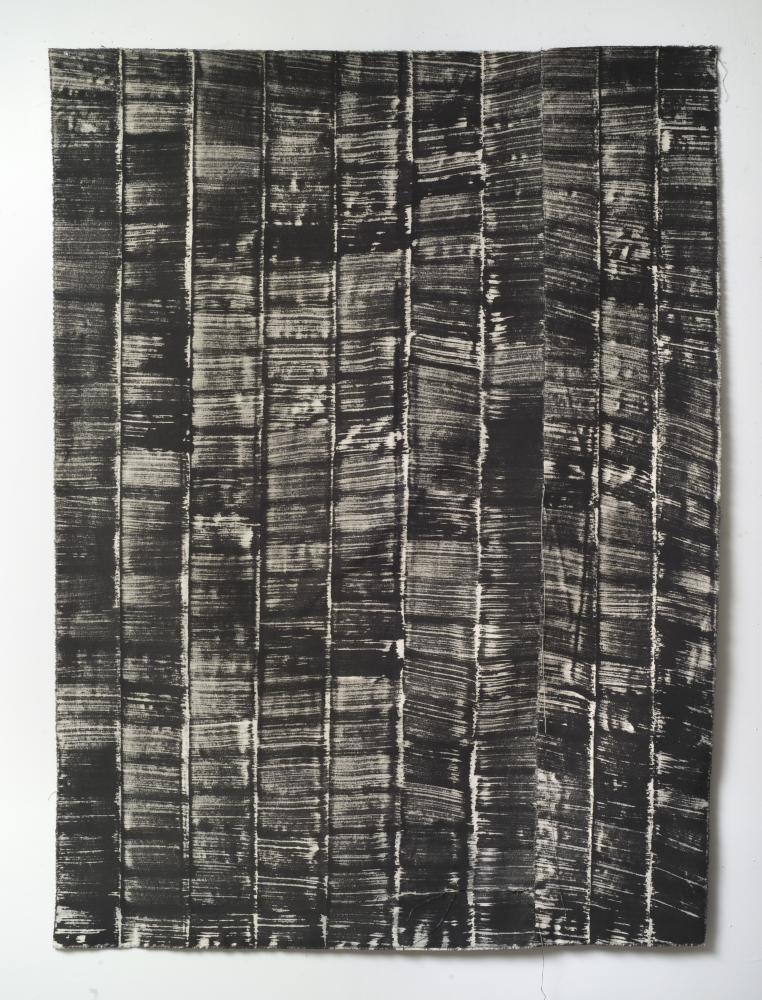
Burton shared how the pieces were sewed together with canvas thread from the pieces themselves, the work seemingly sewn onto itself. There were many artists and architects that influenced her. Textiles also became an influence after she began making this series. Her pieces are also connected to a theme. The rabbit pelt too holds a pattern unlike the canvas pieces. She looks at her bronze pelt like a landscape.
“The pelt itself is like a grid… if you think about nature, even your skin, there’s a grid pattern in your skin… so there is a pattern and the rabbit bronze pelt is like a landscape — a horizontal landscape and it reminds me of my childhood. I grew up in Ohio with rabbits everywhere and people hunting animals and it’s that horizontal landscape as opposed to the vertical landscape of the canvas works. The title of the piece comes from a saying of Rudyard Kipling but it was also something for me, something that my aunt told me often when I was a child and I was playing too hard, or I was a teenager and I was overworked and tired and I would show up at her door and she’d say, ‘my dear, you look like a rag, a bone, and hank of hair. Come in and have a hot meal.’ The idea of the rag that gets sewn together and the bone being the color of the canvas and the hair being the rabbit pelt… it wraps it all up.”
Burton notes that though she is playing around the work, its beginning may look very formal…The grid reminds her of her father who was an engineer and teacher by trade and she was raised to think like a perfectionist—with precision. The idea of the grid branched out from that mentality.
“The grid is the way to make a mess really presentable… the way I make these is kind of a mess! I get paint all over me, there’s paint on the floor, I have to put plastic on the floor.”
Burton spent a better part of the next half hour or so answering questions. She is certainly someone to watch and keep in mind.
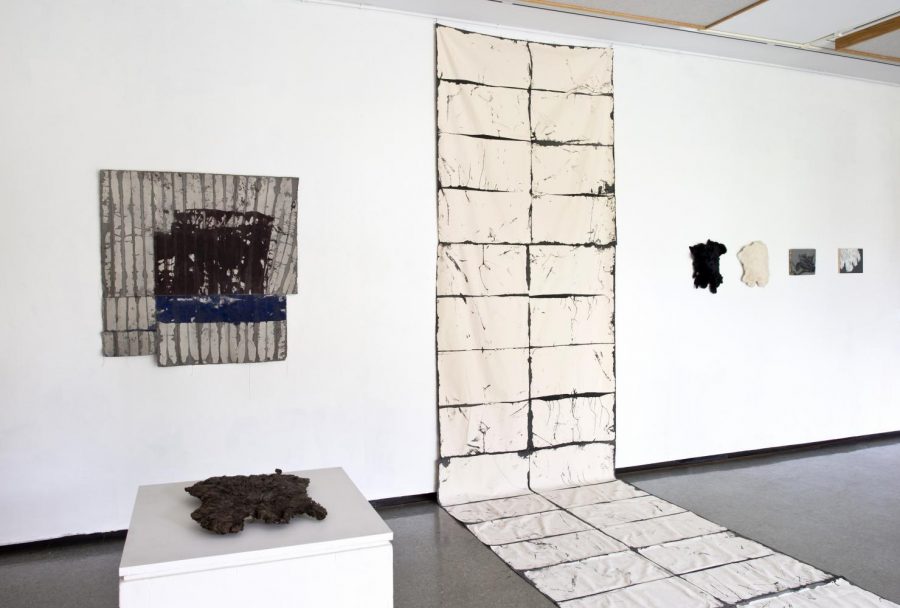



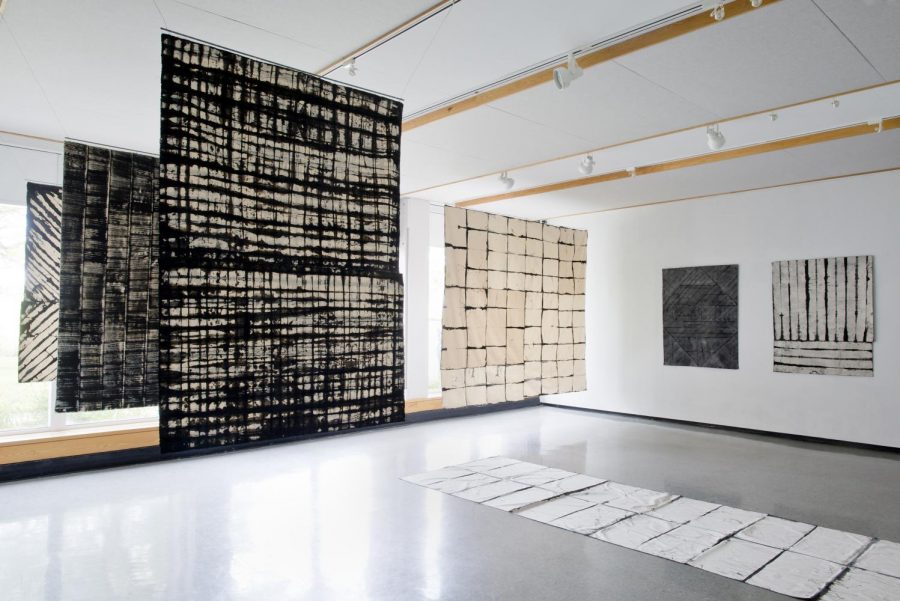
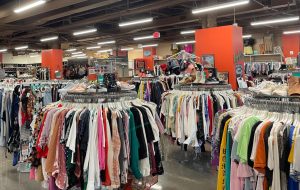
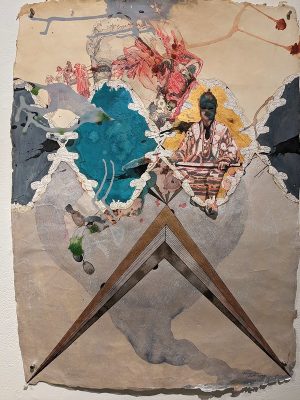
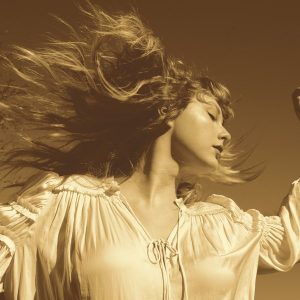

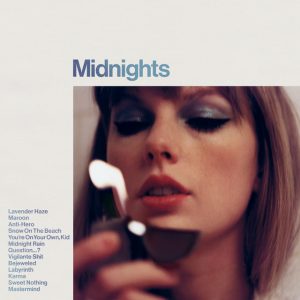




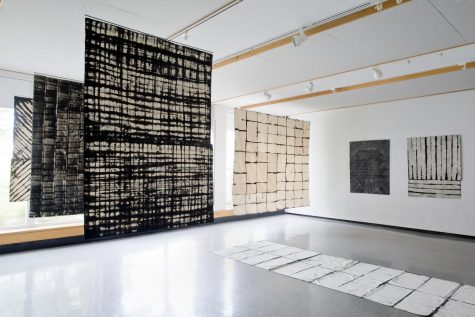
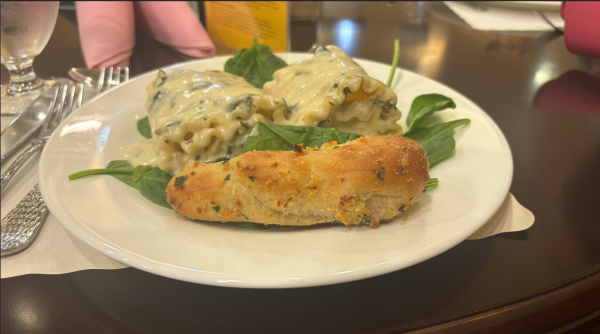









Jada Burton • Apr 2, 2021 at 11:35 pm
Hi aunt Caroline just admiring your art work …..your FAMOUS!!!!!!!! ??????I love you ~ Jada